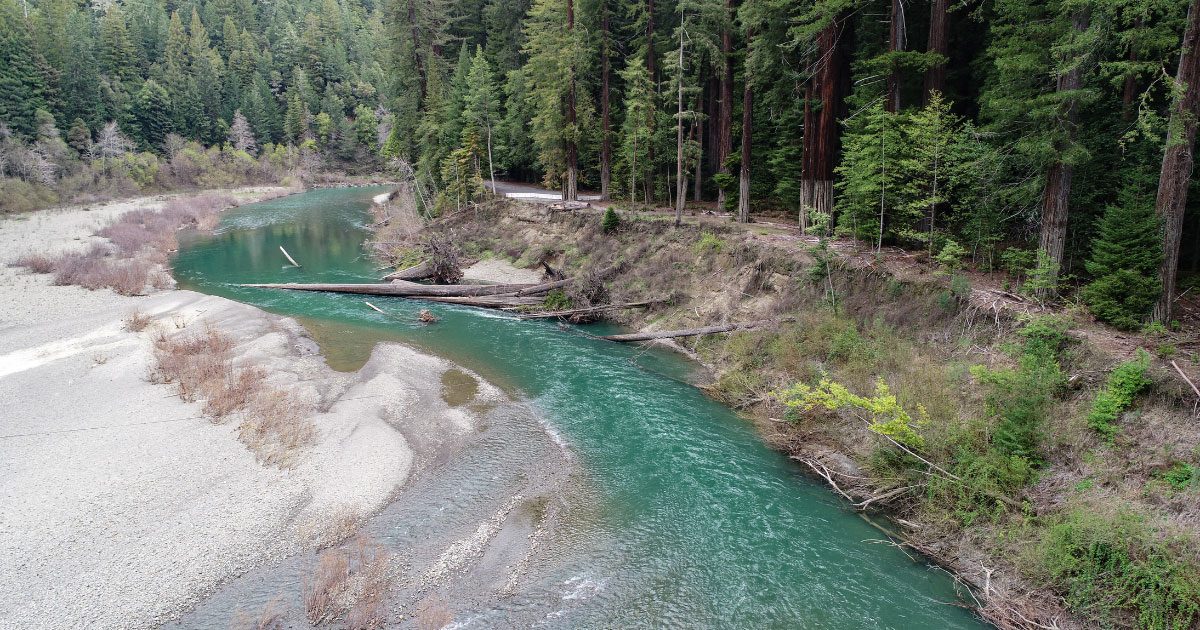CalTrout works across the state to protect our freshwater resources by building drought resiliency for vulnerable watersheds and fish populations. Our North Coast, Mt. Shasta/Klamath, Mt. Lassen, and Central Valley regions recently received significant investment in and support from the California Department of Fish and Wildlife’s (CDFW) Drought, Climate and Nature-Based Solutions Initiatives for four ongoing projects. These projects join four other CalTrout projects supported by CDFW’s Drought Resiliency and Salmon Habitat Restoration initiatives in our Mt. Shasta/Klamath region, continuing to strengthen our partnership with the agency.
Evans Spring Scientific Investigation to Support Cold-Water Ecosystem Resilience to Extreme Drought
Mt. Shasta/Klamath Region
Evans Spring is a cold-water spring in the Little Shasta River watershed. It historically contributed enough flow to the river to facilitate access for salmonids to critical cold-water habitat. Currently, Evans Spring is diverted in its entirety at its source for agricultural use, resulting in a lack of flow and elevated temperatures that are exacerbated by drought. CalTrout is working with farmers to add instream flow as a beneficial use of their allocated water, including the reconnection of Evans Spring to the Little Shasta River. This project funds a study necessary to quantify the local and regional habitat benefit of this additional water - to inform design and provide instream protections post implementation.
Battle Creek Floodplain Enhancement
Central Valley Region
Battle Creek is a major tributary to the Sacramento River. CalTrout, River Partners, and Ducks Unlimited received funding to redesign and implement a project to enhance waterfowl habitat while delivering floodplain-derived food resources to juvenile salmonids in lower Battle Creek. The project will enhance and re-operate 3.5 acres of wetland adjacent to lower Battle Creek to deliver floodplain-derived food web resources to juvenile fish constrained to the stream channel. This will support establishment of a second winter-run Chinook salmon population bolstering abundance of all four runs of Sacramento Valley Chinook salmon.
Big Chico Creek Watershed and Fish Passage Planning Project
Mt. Lassen Region
Big Chico Creek flows through the town of Chico on its way to its confluence with the Sacramento River. This project will assess fish passage improvement options and feasibility on two barriers on Big Chico Creek — One Mile and Five Mile dams. Other threats to listed species such as connectivity, stranding, and habitat suitability will also be assessed. The result will be a Fish Passage Conditions Report and a watershed planning document which identifies threats and action items. The Mechoopda Indian Tribe will be involved in all aspects of the project to create tribal fisheries program capacity and professional development opportunities.
Bull Creek Hamilton Reach Instream and Floodplain Habitat Restoration Project
North Coast Region
Bull Creek is a tributary to the South Fork Eel River, located in Humboldt Redwood State Park, and is the only publicly-owned watershed in the South Fork Eel basin. This project will restore and enhance important riparian, instream, floodplain and side-channel habitat in Bull Creek, which supports coho and Chinook salmon, steelhead, and Pacific Lamprey. The project will excavate coarse sediment from the Hamilton floodplain that is a relic of the devastating 1964 flood and that has prevented recovery of native fish and riparian habitat in the channel and floodplain. Our project will revegetate the floodplain with native plants, and install four engineered wood jams in the mainstem of the creek adjacent to the floodplain. The construction phase of the project will kick off this month, and we are excited to get to work.
Thank you to the California Department of Fish and Wildlife for investing in our work, and thank you to our other project funders and partners for working with us to put restoration into action. These partnerships are crucial to support our efforts to ensure fishery and watershed health across California.
Learn more about CDFW’s Drought, Climate and Nature-Based Solutions Initiative
Cover Photo: Bull Creek by Mike Wier





